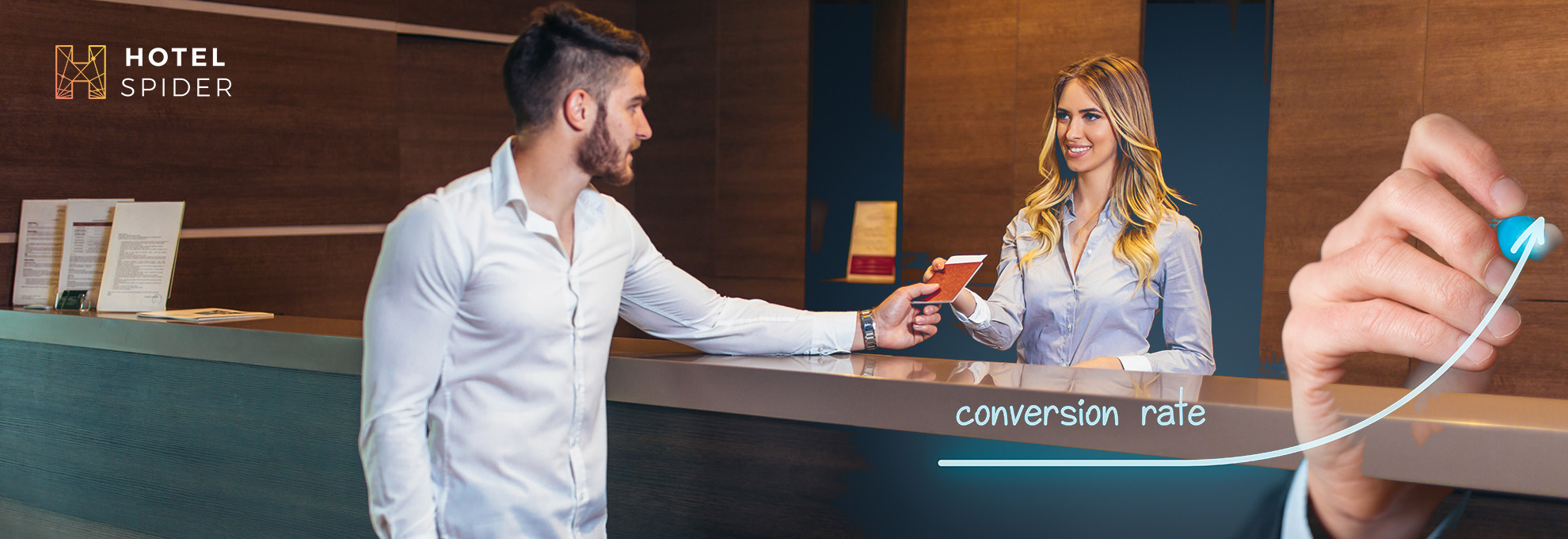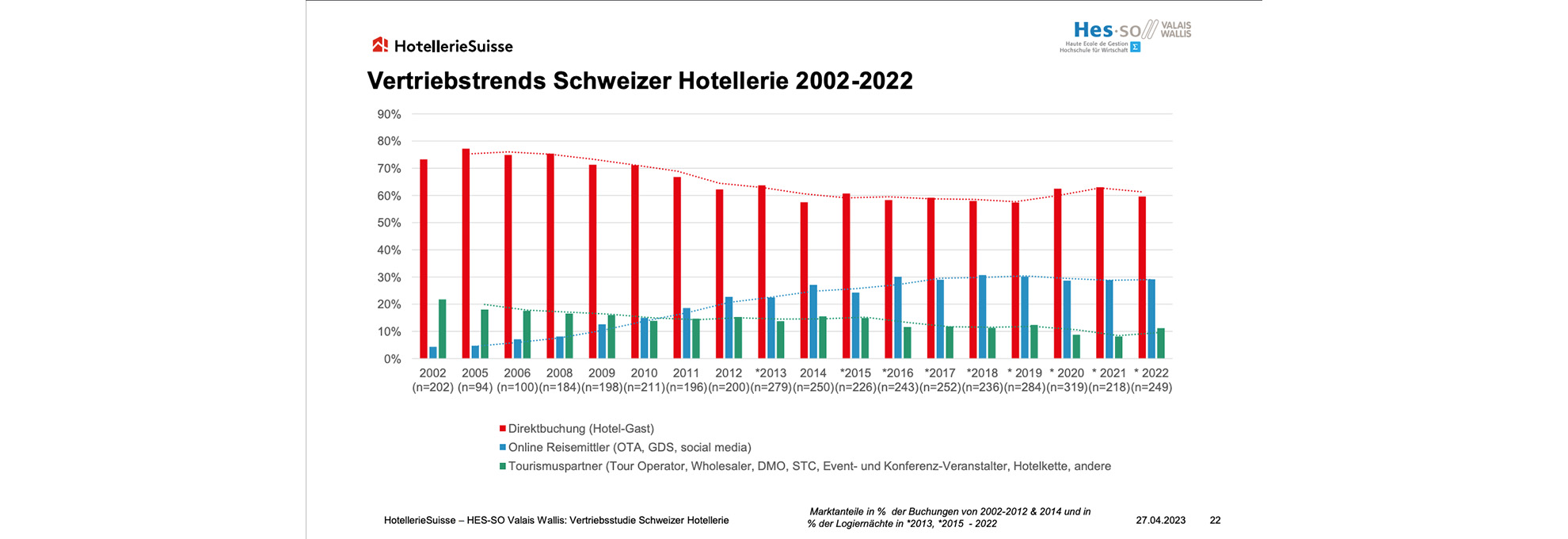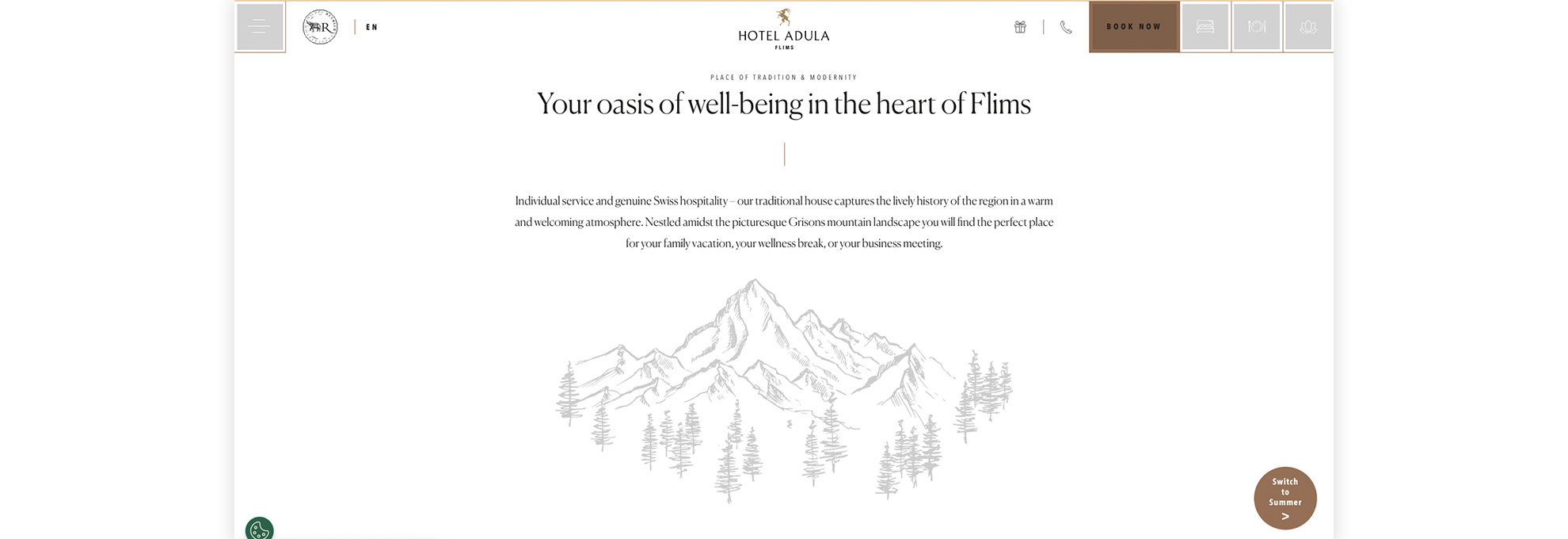
More direct bookings, fewer commission payments and lower sales costs overall - as a hotelier, these goals are probably high up on your list. Discover how you can easily accomplish these goals with the following tips.
There's plenty of advice on how to generate more direct reservations. People often recommend running ads, creating a social media presence or using email marketing.
Unfortunately, a simple but extremely important aspect is far too often overlooked. This involves optimizing the web-booking engine on your hotel website.
There is so much to say on this topic that we have now actually discussed it in two live streams.
The first time, Maria Perez, Marco Baurdoux and Elisha Schoppig discussed realistic conversion rates (CRs) and explained the basic steps you can take to optimize your web-booking engine in a targeted way.
In the second round, Markus Müller, co-founder of GauVendi, Marco and Elisha suggested more tips and ideas to help you to immediately convert a larger proportion of your website visitors into guests.
A summary of the most important tips and insights from both live streams can be found here.
What is a conversion rate?
The conversion rate indicates how effective your website or web-booking engine (Internet Booking Engine – WBE) is at “converting” visitors into paying guests.
To determine the conversion rate, divide the number of direct bookings by the website or
WBE

“It is important that these numbers are both measured over the same time period, e.g. one month or a quarter”, emphasizes Marco.
For example: Over a one-month period, the Waldsee Hotel website records 1,000 visitors. Within the same time frame, 35 direct bookings are received. Using the formula, we can calculate a CR of 3.5% for the website. Of the 1,000 visitors, 650 found their way to the web-booking engine. For the 35 direct bookings, the WBE has a CR of 5.38%.
Industry standards in the hotel industry: What is a “good” conversion rate?
The higher your CR, the better, but what is really considered to be a “good” rate? It is difficult to state a general rule.
According to 80 Days, the average CR of hotel websites in 2019 was approximately 0.81%. Nowadays, websites achieve a CR of almost 2% on average. The conversion rate of booking engines has also improved. They achieved an average of around 3.6% in 2019. Today, it's slightly higher, at around 4%.
“Data shows that these are only rough guidelines. Conversion rates vary greatly from hotel to hotel and market to market. Belonging to a chain or the type of WBE also affects the CR,” Marco explains.
Examining these numbers not only helps you to understand the performance of your website and web-booking engine, but also allows you to analyze your advertising costs. If you can find out how many direct bookings come from your website, you can also calculate acquisition costs per guest. This should include costs for the WBE, your website, any ads placed, as well as other marketing investments.
If you now want to optimize your acquisition costs and your CR it's worth starting with the booking engine.
The web-booking engine: Online marketing goals for hotels
A clear goal of hotel marketing is to generate more bookings, ideally directly via the hotel website.
“View your hotel website as an e-commerce platform. The goal is to convert your website visitors into paying guests. Everything should be set up to achieve this goal. The key point of focus is the web-booking engine. This is why it’s important to lead as many potential customers to your WBE as possible so that they can make reservations with you directly”, says Elisha.
The desire to become less dependent on OTAs and other partners has led hotels to invest more in their direct booking channels in recent years. Before and especially during the Covid-19 pandemic, the proportion of direct bookings has therefore increased steadily. Unfortunately, this trend is now declining somewhat.
However, this does not necessarily need to be the case for your hotel. By taking a few simple steps, you can take matters into your own hands and continue to increase your conversion rates.

The first step towards a higher conversion rate
To optimize your conversion rate, you are going to need website data. It is essential that you collect, evaluate and understand the data yourself. Google Analytics is an excellent tool for this. Create your account and connect it to your website and web-booking engine. Once this is done, the system collects your website data and prepares it visually.
You will now be able to easily get answers to questions such as:
-
How many hits does your website have?
-
How long do visitors stay on your website and its individual sub-pages?
-
How are visitors clicking through the website?
-
Where do they get stuck or bounce off?
This provides you with important information about how visitors use your website and where there is a need for optimization.
If we dig further, we can see how many visitors gain access using a desktop PC or mobile device (e.g. smartphone, tablet). A CR can also be determined for each case; if there are major differences between desktop and mobile devices, you will be able to see where more optimization is needed. Adobe data reveals how both channels are extremely important. This shows how 52% of travel searches and 21% of buying decisions are made on mobile devices.
Once you have a first impression of your data, you can continue optimizing your web-booking engine. Follow these six tips and you will soon see an increase in your CR - even if your page views remain the same.
The basics: 6 steps to an optimized booking engine
1. Gain an overview of your current online booking process
Do you know how many clicks it takes to make a direct booking on your website? If not, go ahead and try it out yourself. Walk through all the steps from the perspective of your website visitors, and be critical. If, at any moment, you find yourself having issues using your website, your guests will surely be feeling the same. You’ll then need to think about how to fix this problem. The following tips provide further suggestions.
2- Be inspired by the best
If you are looking for inspiration for an optimized booking process, take a look at the OTAs. Because it is not without reason that they have such a large market share for hotel bookings. For years, they have continually improved their structure and content arrangement in order to provide users with the ideal booking experience. This is also what your goal should be; the easier and faster the process, the more guests complete it.
3. Make your web-booking engine easy to find
“A web-booking engine is sometimes completely hidden on a website. This makes it difficult for guests to book directly. Even if they have actually already chosen a hotel, they might decide to click on an OTA or even the competition if they can’t find the WBE straight away”, warns Marco.
He therefore suggests the following: “Think about what website visitors need to do to access the web-booking engine. Ideally, there will be a well-marked button on each page that leads directly to it. Then a single click is enough.”
It's even better if the button is always displayed at the top of the header bar or floats at the side when scrolling. This means the guest always has it in sight and never has to look for it.

[Caption: Hotel Adula has implemented this well. Even if users read the content in the middle of the homepage, the “Book Now” button is always visible at the top of the screen.]
4. Put your offer in the best light
Your website and the WBE need to present your hotel in the best possible way to convince potential guests to book directly with you. These four points are particularly important:
-
Engaging images: Add five to six pictures per room to give guests a detailed impression. The photos should be well lit and show your hotel at its best. You need to make sure that website visitors want to stay at your hotel. Investing in a professional photo shoot pays off.
-
Quick, interesting descriptions: Provide relevant information about your hotel, rooms and services, but don’t write a novel.
-
Honest best price guarantee: Reward your direct bookers by offering lower prices than on OTAs and other channels. You can also offer advantageous conditions or additional services, such as breakfast included or free cancellation. But be careful! If you promise these additional benefits, make sure you actually provide them.
-
Social proof: Use a plug-in within the booking engine to show which room categories families, couples and business travelers have recently booked. The information shown here should depend on how many people the guest is booking for. This can help to guide new customers while also building more trust.
5. Ensure a quick booking process
“Do it like the OTAs. Keep asking yourself how you could make the booking process even simpler and reduce ‘friction’, advises Markus.
These five points might help you:
-
Ease of use: The web-booking engine must be easy to use and, most importantly, should work well on mobile devices. The fewer clicks it takes to complete the reservation, the more guests will do so.
-
Easy-to-understand names for your rooms and suites: Although fancy titles might sound good on your website, they can also end up causing confusion. If guests don't understand what is being offered, they won't end up making a booking.
-
Language and currency: Make it easier for international guests by offering different language and currency options within the WBE. This is very easy with the Hotel-Spider web-booking engine.
-
Cancellation conditions: It is of course important to communicate these conditions clearly. Still, there is some wiggle room. “Our data shows that conversions increase when cancellation terms are not prominently displayed,” says Markus. So instead of highlighting them in bold, they could follow the room description as regular text.
-
Guest information: If you ask for less personal information during the reservation, more guests will complete the process. One option is only requesting credit card details a few days after the reservation is made in order to guarantee the reservation.
6. Ask your partners for advice
Your technology provider will be happy to share useful information, data and tips with you. The Hotel-Spider team, for example, can answer all of your questions about website and WBE optimization. Just get in touch!
Tips for advanced users: 3 further optimization ideas for your booking engine
If you have already implemented the points above, you can continue straight on our professional tips.
1. Personalize your offer
“Too often, only a generic list of available rooms is displayed. Instead, the result should be tailored to match the search query. For example, if a guest is looking for accommodation for two adults and two children, they should only be shown large rooms with enough space for extra beds or rooms with connecting doors”, explains Markus.
If you want to go even further, you can also make various attributes bookable. These include the floor, the direction the room is facing (e.g. beach or city), the amenities (e.g. bathtub vs. shower) or proximity to the elevator. You can get really creative here, depending on what your hotel offers.
“But make sure you keep your offer manageable. Too many options could make potential guests feel like there is an additional cost for every little extra. So choose attributes that are relevant to your target group and be transparent when it comes to the costs and benefits of these bookable features”, he explains.
2. Limit your choices
Another reason to limit your choices is that too many options can be overwhelming and intimidating to guests. This can be the case, for example, if there are too many different rates for a single room category.
“Our data shows that six options are optimal. This means that guests have a good range of options without it becoming too much. It is important that these offers are dynamic and personalized. This gives guests more flexibility and offers relevant customization options”, emphasizes Markus.
3. Test, test, test
Every time you implement one of these tips, watch how your conversion rate develops. Try different photos, texts and conditions Offer different attributes and inclusions. Try personalization and more or fewer booking options. This will help you to identify what appeals to your guests and how each change affects the CR. This will help you improve your results step by step.
“Every hotel is different. There is no solid rule that guarantees success. So try out different approaches to see what works best for your hotel and your guests “, says Elisha.
To properly measure the success of your WBE optimization, he suggests the following: “Pick one aspect and test the effects of different changes for a few months. Then you can move on to the next point. This means that it will take time to work your way through everything, but you will also get the deepest insights and the best results.”
When it comes to optimizing your direct sales, it is important to keep both the WBE and the website in mind.
Even if the WBE seems “smaller” in comparison to the website itself, it is of tremendous importance. A strong online presence loses its value if the booking process feels clumsy and cumbersome.
But by using the tips in this article you will be able to consistently improve the conversion rate of your web-booking engine. Then you stand a good chance of achieving or even exceeding the industry standard CR of 4%.


